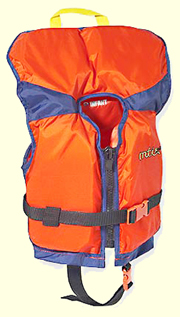|
|||||||||||||||||||||||||||||||
|
|||||||||||||||||||||||||||||||
|
Way Downstream
In Washington, Maryland Rep. Wayne Gilchrest, a Republican, is the key player in rewriting the law governing fishing in U.S. waters. His proposal is winning support from conservationists over an industry-backed bill. Gilchrest’s plan takes an ecosystem approach to fisheries management and requires dep In Maryland waters, tots stay safe with a new law that requires children under the age of four — or under 50 pounds — to wear life vests on the water. After April 1, kids can’t wear just any orange floatie. The new law requires kids to wear a personal floatation device with a strap between the legs, fastening together the front and back of the PFD. It also must have an inflatable headrest or high collar to keep the head above water and a web handle so the child can be lifted into a vessel … Along the upper Potomac, you can watch bald eagles in their nest via Internet. Type in training.fws.gov/eagle and watch video stills broadcast every 30 seconds. The first eaglet hatched March 18. The eagles built the nest three years ago in a sycamore tree on the campus of the National Conservation Training Center, near Shepherdstown, West Virginia. This year, the U.S. Fish and Wildlife Service hired tree climbers and a cherry picker to raise the solar-powered Web cam that broadcasts the images. Our Creature Feature comes from the Virginia waters of Chesapeake Bay, where new Gov. Tim Kaine declined at the 11th hour to impose a cap on menhaden fishing in the state — despite orders from the Atlantic States Marine Fisheries Commission to do so. Kaine’s stubbornness is a blow to Maryland fishermen, who are convinced that menhaden overfishing by factory trawlers owned by a Texas company is depleting a chief food source for rockfish. The next question: Will the U.S. Department of Commerce step in and punish Virginia? |
|||||||||||||||||||||||||||||||
|
|
|||||||||||||||||||||||||||||||
|
© COPYRIGHT 2004 by New Bay Enterprises, Inc. All rights reserved.
|



 leted fish populations to be swiftly rebuilt …
leted fish populations to be swiftly rebuilt …